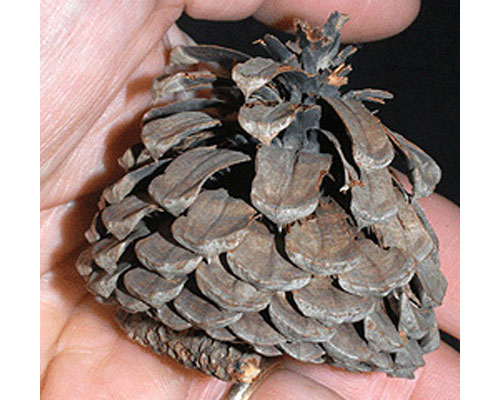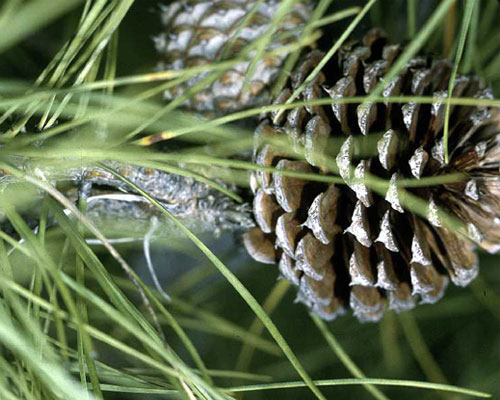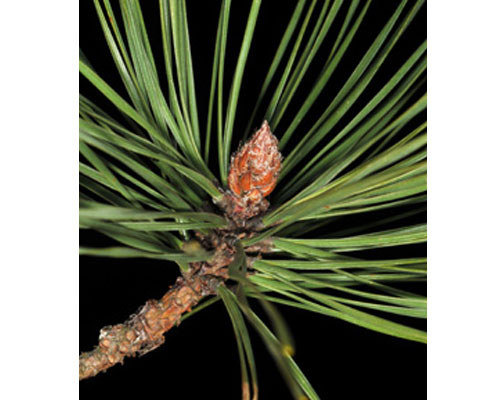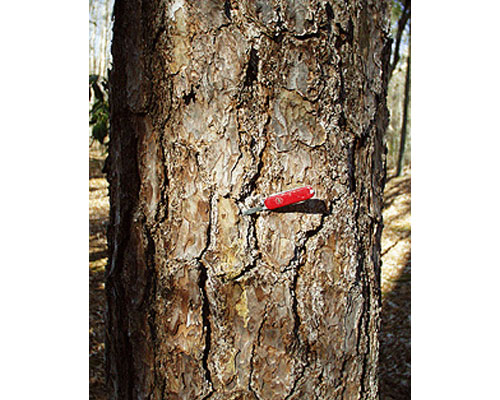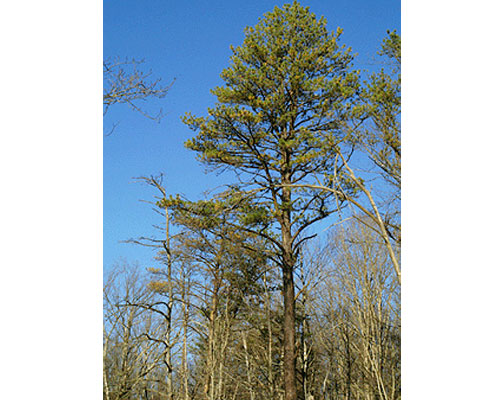Pitch Pine
Pitch Pine
Pinus rigida - #20
Easily identified by the slightly twisted needles bundled in threes and cones with sharp prickles on their tip, even after the seeds disperse, the cones stay on this pine for as long as ten years. These left-over cones resemble hundreds of black birds perched on the boughs, and serve as a good way to identify the tree from a distance. The cones open at irregular intervals providing winter food for birds and other animals such as the red squirrel.
The unusually thick bark makes this scraggly pine fire-resistant. The wood is very resistant to water decay, which made it valuable for the construction of water wheels. Before the American Revolution, pitch pine was used to make tar and turpentine.

